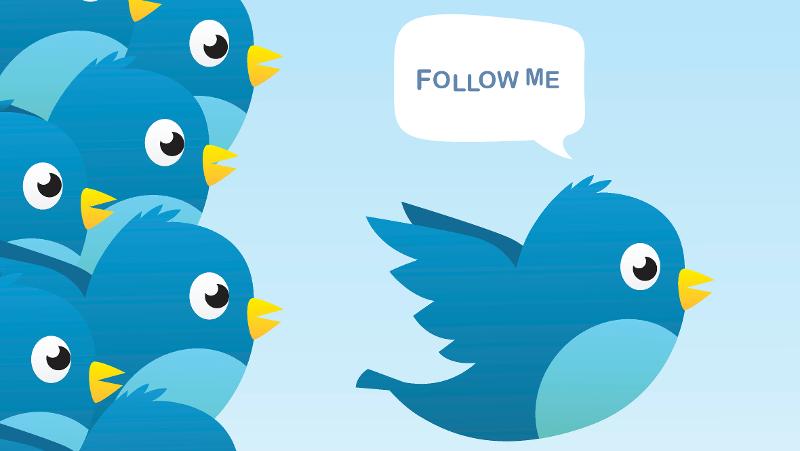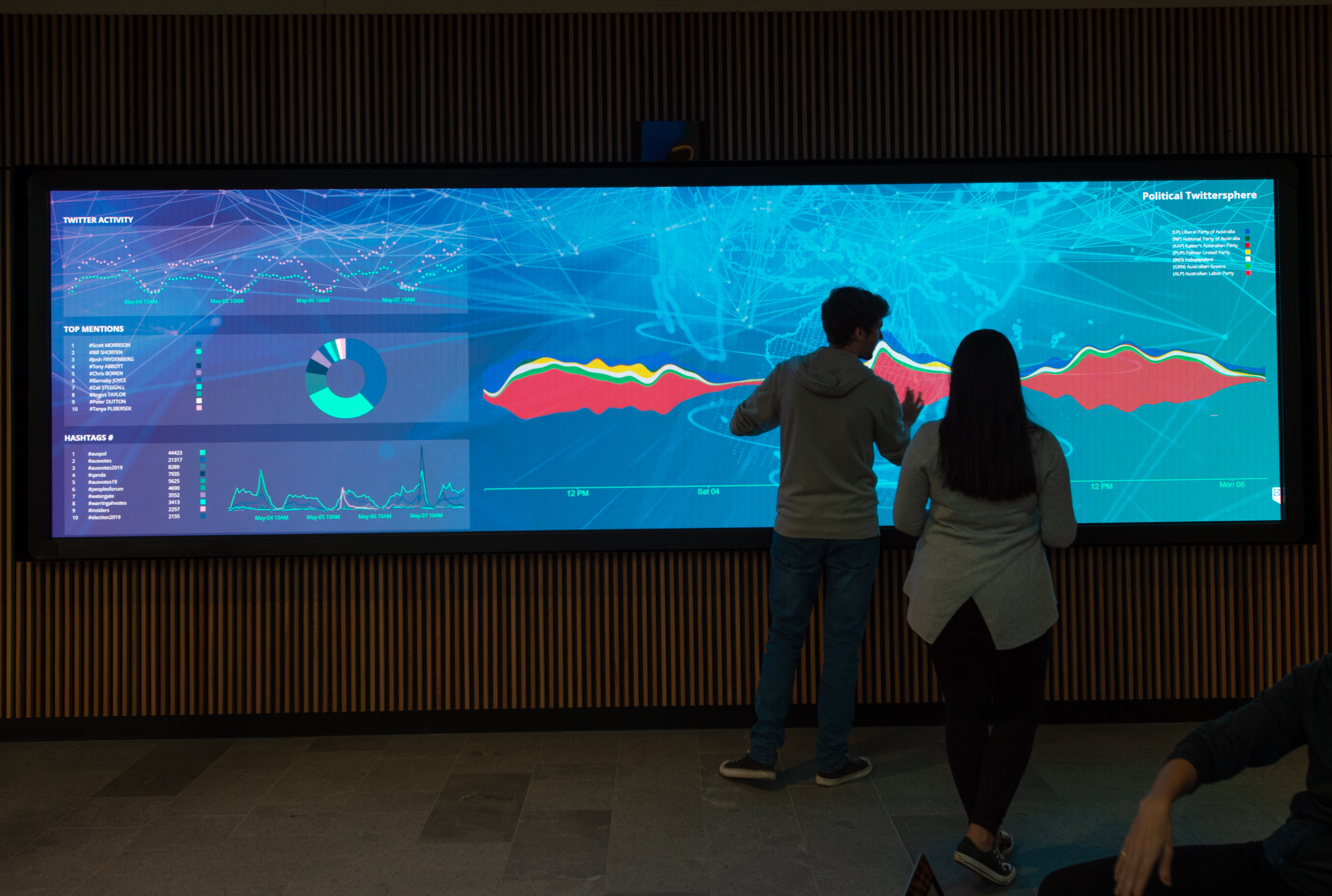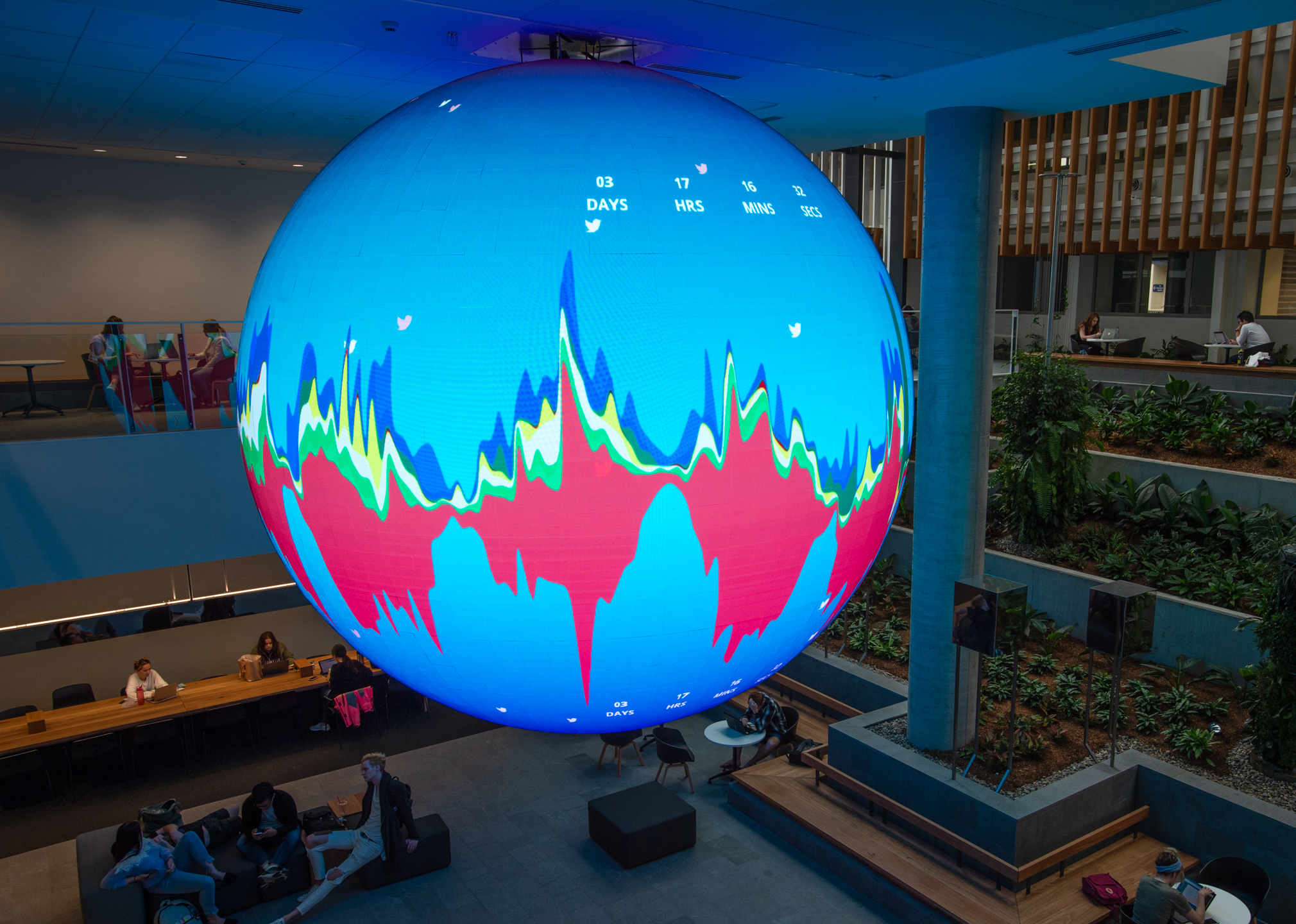
Engagement on Twitter with independent candidates in this Federal election campaign is almost double what it was throughout the whole of the 2016 campaign, QUT’s Digital Media Research Centre researchers have found.
Professor Axel Bruns said researchers have analysed more than 1.1 million individual tweets from about 74,000 unique users engaging with the Twitter accounts of 270 Senate and House of Representatives candidates since April 22.
And in a collaboration between the researchers and QUT’s Digital Observatory and Visualisation and e-Research teams, the overall engagement patterns are being displayed in a first-of-its-kind installation on QUT’s Sphere and interactive digital wall at the new Education Precinct at Kelvin Grove.
Not surprisingly, Professor Bruns said, the greatest volume of election-related tweets have been directed at Coalition and Labor candidates, and in particular Prime Minister Scott Morrison and Opposition Leader Bill Shorten, with Mr Shorten marginally ahead in the total count.
But it’s the Independent candidates who also stand out in Twitter discussions – and collectively rank ahead of the Nationals, Greens, and Clive Palmer’s United Australia Party (UAP).
“The increased attention Twitter users are paying to outsider candidates I think reflects current debates about the possible fragmentation of Australia’s traditional two-party system,” Professor Bruns said.
“As at May 13, there were 79,000 tweets engaging with Independents, compared to 46,000 tweets to Independents for the whole of the 2016 Federal election campaign.
“A large part of that increased volume recently has been with the account of Independent Dr Kerryn Phelps in the New South Wales seat of Wentworth, who engaged with Liberal candidate Dave Sharma over his preferencing of Fred Nile’s Christian Democrats.
“The Independent drawing the most engagement overall, however, is former Olympian Zali Steggall, who is challenging former prime minister Tony Abbott for the NSW seat of Warringah.”

Professor Bruns said when it comes to whose postings are being shared in the Twittersphere, Coalition candidates lag way behind those of other parties.
“Retweets don’t necessarily represent endorsements, but they do mean that candidates receive amplification by the Twitter community of their views and information, so retweets are an indication of the overall mood of users of this social media platform within the electorate,” he said.
“For the Coalition, only 2.6 per cent of all engagement with Liberal and National candidates is retweets of their posts, which is less than the UAP, at nearly 4 per cent.
“By contrast, 24 per cent of all tweets to Greens candidates are retweets, while for Independents it’s 21 per cent and for Labor 17 per cent.
“These patterns are broadly consistent with the 2016 election, but in 2013 retweets for Labor and Coalition candidates as well as Independents represented less than 3 per cent of the total engagement with these accounts.”
Professor Bruns said other observations from the analysis include:
- In the first week of the campaign, Twitter activity was dominated by #watergate and questions around Murray-Darling water buybacks and the roles of the Coalition’s Barnaby Joyce and Angus Taylor.
- Consistently popular hashtags have been around key electorates, such as #warringahvotes #kooyongvotes and #humevotes.
- Tony Abbott has been a major focus of Twitter engagement at various times, particularly around Warringah campaign events and debates.
- The hashtag #ilikebillshorten has also been among the top 30, in response to a comment on ABC TV’s The Drum that the Opposition leader was not well liked.
- Hashtags related to Labor’s policy to abolish franking credits for retirees, to climate change-related issues, and to the Adani coal mine project have been largely absent. #stopadani has not featured in any significant way.

QUT’s political “Twitter-Sphere” and digital wall feature colour-coded graphic representations of day-by-day engagement with the political parties and Independents, the top 10 hashtags trending, and top 10 candidates being mentioned.
On the Sphere, the activity of the Twitter birds reflects the topic hashtags that are trending.

QUT Media contacts: Karen Milliner, 07 3138 1841 or k.milliner@qut.edu.au
After hours: Rose Trapnell, 0407 585 901 or media@qut.edu.au



